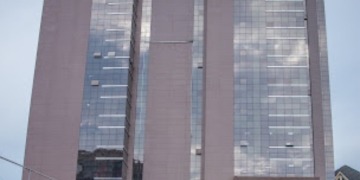
BULAMBULI —Rescuers armed with rudimentary tools; hoes, sticks, machetes and bare hands on Friday morning searched the unstable ground, a day after a mudslide destroyed homes in a Bulambuli district.
Local officials said at least 7 members of one family were killed by the rubble while other people injured and property worth millions of shillings was buried under the rubble.
A hillside in Buluganya sub-county area collapsed early on Thursday following heavy rains, leaving many houses completely covered in mud.
Reports from the scene indicate many people may have been asleep when the mudslide occurred in the early morning of Thursday.
According to eye witnesses, the mudslides came down the hills uprooting trees, bulldozing soaked grounds and burying properties deep.
Mr Emmanuel Sabunyo, a resident says that the mudslides were triggered by heavy rains that pounded the area from 11:00 am to 3.00am before the Mount Elgon National Park land gave way. He adds that several animals and crops were also destroyed
He disclosed that several people in his area are homeless after some of the homes were washed away by the mudslides while others had their roofs blown off by heavy winds.
When this website visited the area, from a distance, Bumasugu village in Buluganya sub-county in Bulambuli district, looks like a freshly tilled garden ready for planting as everything including houses and trees have been buried.
The Mount Elgon region that straddles Kenya and Uganda often receives heavy and mainly relief rainfall, which devastates villages and kills people on mountain slopes.
Mr Stanley Bayola, the Resident District Commissioner Bulambuli, one body has so far been recovered by the residents. He said that they are waiting for a grader to retrieve the other bodies.
Mr Bayola says that the displaced people have been advised to seek shelter at Masungu Primary School in Buluganya sub-county in Mt Elgon sub-region that is prone to mudslides.
Ms Annet Nandudu, the LCV chairman for Bulambuli district said “My thoughts are with all those affected, wounded and those who lost their homes and are now living in fear and uncertainty about the future since there is no food for them now,” she said.
Ms Nandudu revealed that the area was surveyed earlier and it is known to contain fast mud and prone to mudslides and that there are indicators that unless the people are moved away, the likelihood of a similar mudslide in the area could happen anytime again,” Ms Nandudu said.
Ms Nandudu described the situation as tense with “community members… scared and fleeing from their homes “In the meantime, the whole district, Bulambuli is still experiencing heavy downpour and we are expecting more of the same in other Mudslide prone areas.”
Bulambuli district in the foothills of Mount Elgon, which lies on the border between Uganda and Kenya, is a high risk area for Mudslides.
This comes at the time preliminary geo-technical study of disaster-prone Mt Elgon by experts led by Dr Yazi Bamutaze, a senior lecturer in the Department of Geography, Geo-informatics and Climatic Science at Makerere University, revealed that conditions remain too dangerous and another mudslide could occur because the ground is still moving.
Latest survey reports issued by the NEMA and UWA also indicate that more than 200,000 people living at the slopes of the mountain are at great risk as the dead volcanic mountain has developed bigger cracks, triggered off by heavy deforestation, poor methods of farming and poor land management around the mountain.
According to a study published in the Elsevier journal, landslide occurrence on the slopes of Mt Elgon dates back to the early 20th century and that geologists had by 2002 recorded some 98 mudslides in Bududa district alone.
Dr Goretti Kitutu, a former consultant and systems analyst at NEMA nor Minister for Karamoja affairs] said areas on the ridges of Mt Elgon are vulnerable to land and mud slips due to the volcanic soils.
In her published works in Elsevier journal, Dr Kitutu says following a long research in the Mt. Elgon areas it was concluded “excavation of slopes and the concentration of runoff water through linear landscape elements (parcel boundaries, footpaths) are the main malefactors besides poor farming methods and settlement at the hills.”
Past heavy disasters
In March 2010, landslides hit Nametsi village in Bududa District killing 350 people and displacing thousands.
In 2011 a mudslide in Bulambuli killed about 28 people. In March 2012, mudslides killed twelve people in Sironko District and in June 2012, another mudslide buried 18 people in Bududa District.










Discussion about this post